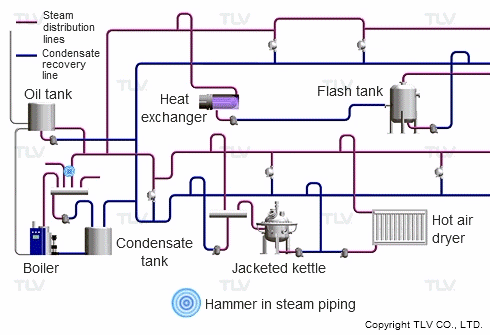How does Water hammer / Steam hammer occur?
The water hammer phenomenon occurs in three main phases. In the first phase, when there is a power outage, the water pump stops operating but the pump impeller continues to spin due to inertia. In the second phase, the pressure in the pipe decreases, creating a reverse pressure. The final phase occurs when the pump impeller spins in the opposite direction due to this reverse pressure.

Dangers from water hammer and steam hammer
When faced with the phenomenon of steam hammer, the risk of damage to the pipes and equipment is quite high. Specifically, a sudden change in the pipe’s pressure, up to 10MPa or 100bar, can trigger this phenomenon. This not only has the potential to damage pipes and steam-using equipment but also threatens installed steam valves on the pipes.
When steam is first introduced into the system, operators will often hear sounds ranging from soft to loud. This is a sure sign that the steam hammer phenomenon is occurring and is a common experience for those working with steam systems.

Locations where water hammer often occurs
Additionally, leaks or fractures in the pipes due to steam hammer can result in heat loss, leading to a wasteful energy situation. Worse, if not managed promptly, this could lead to severe consequences for the health of the operators.
In the case of water, some solutions, such as the use of water hammer arrestors, have been applied to absorb the shock force. However, for steam, there are currently no specific guidelines or documentation suggesting effective preventative measures.
Therefore, a sound understanding and intelligent management of the water hammer and steam hammer phenomena are crucial for protecting piping systems, equipment, and operators.

 Tiếng Việt
Tiếng Việt




